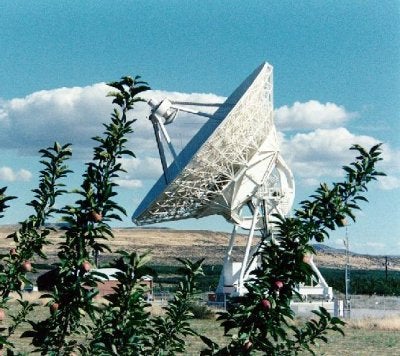In the first project pursued under this agreement, the MPIfR will contribute $299,000 to upgrade the continent-wide Very Long Baseline Array’s (VLBA) capability to receive radio emissions at a frequency of 22 GHz. This improvement will enhance the VLBA’s scientific productivity and will be particularly important for cutting-edge research in cosmology and enigmatic cosmic objects such as gamma-ray blazars.
“This agreement follows many years of cooperation between our institutions and recognizes the importance of international collaboration for the future of astronomical research,” says Fred K.Y. Lo, NRAO Director.
“Our two institutions have many common research goals, and joining forces to keep all our telescopes at the forefront of technology will be highly beneficial for the science,” says Anton Zensus, Director at MPIfR .
Both institutions are part of the international collaboration building the Atacama Large Millimeter/submillimeter Array (ALMA) in Chile and of the international planning effort to build a Square Kilometer Array.
The VLBA is a system of ten antennas, each with a dish 25 meters in diameter. From Mauna Kea on the Big Island of Hawaii to St. Croix in the U.S. Virgin Islands, the VLBA spans more than 8000 kilometers.
on a peer-reviewed basis.
The agreement notes the report of the U.S. National Science Foundation’s (NSF) Senior Review committee, which called upon the NRAO to seek partners to contribute to the operation of the VLBA. The MPIfR affirms its strong interest in maintaining the VLBA’s unique scientific capabilities, and its monetary contribution toward the 22 GHz upgrade
of the VLBA is a solid sign of that commitment.
“The VLBA provides the greatest resolving power of any instrument in astronomy, and the MPIfR’s contribution to enhancing its capabilities is an important validation of the VLBA’s importance to frontier astrophysics,” Lo says.
The joint VLBA project calls for the MPIfR to fund the receiving-system upgrades and the NRAO to perform the work. The project is scheduled to be complete, with all 10 VLBA antennas upgraded, in August of 2008.
The upgrade will make the VLBA’s receiving system for 22 GHz 30 percent more sensitive. This will enhance the VLBA’s capability to advance a key area of science using rotating disks of water molecules at the cores of distant galaxies to make precise measurements of the distances to those galaxies.
This technique, first used in the late 1990s, can measure large cosmic distances directly, without relying on various assumptions required for more indirect techniques. The improved precision is important to resolving a number of frontier astrophysical problems, including the nature of the mysterious “dark energy” that appears to be accelerating the expansion of the universe.











